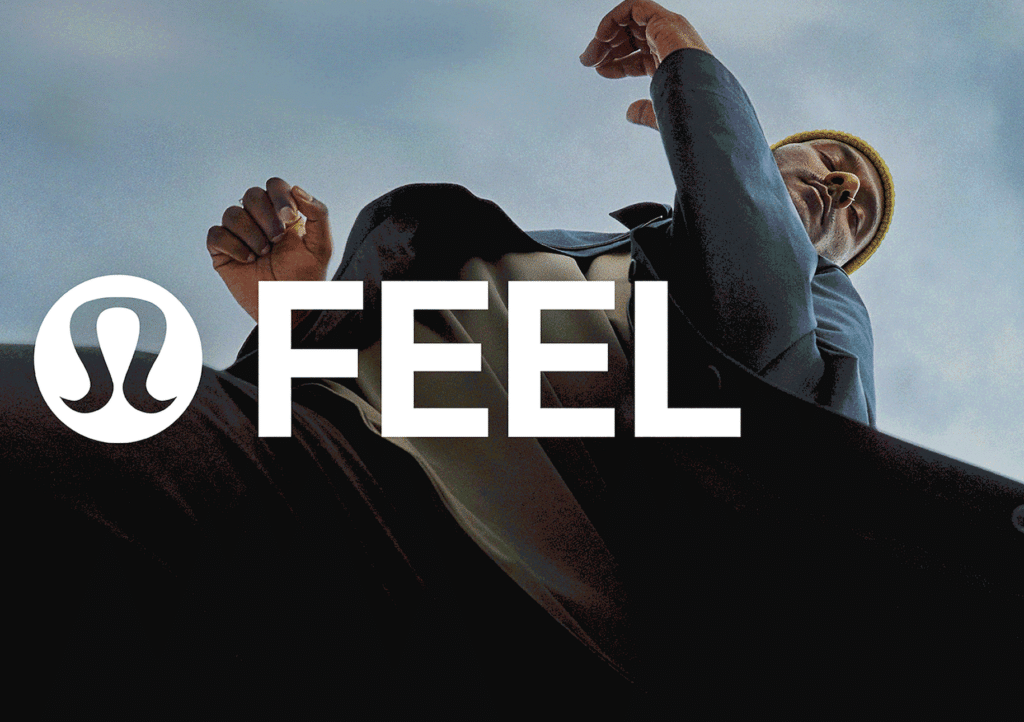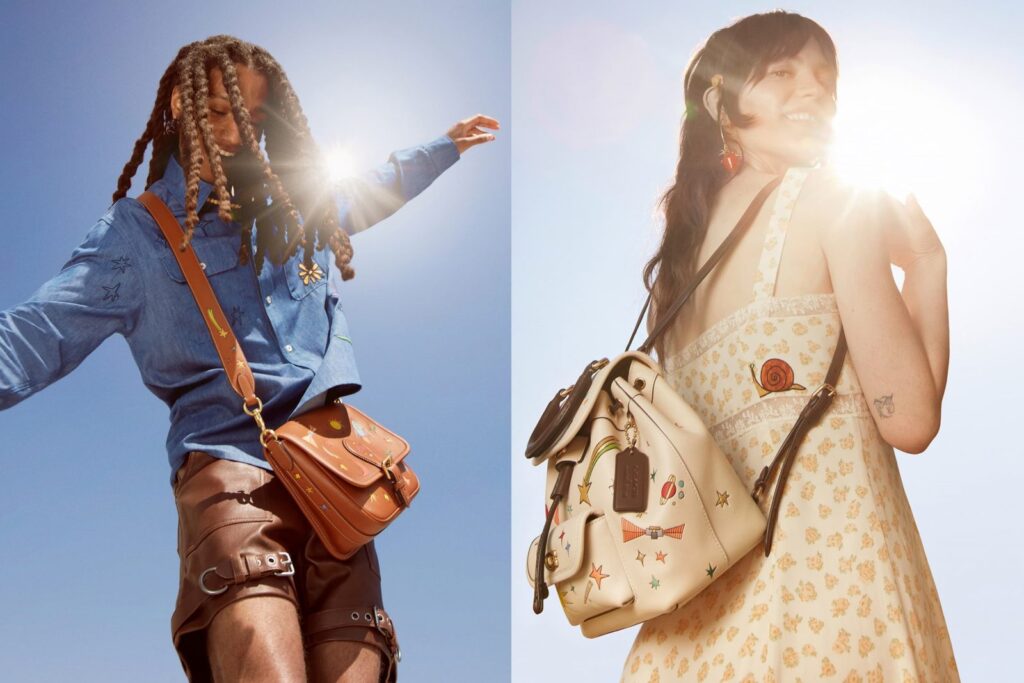Business Insider released a list of the 33 companies that are “revolutionizing retail.” Firmly cemented on that list, among the usual suspects like Lululemon, Zara, Under Armour, Amazon, and Nike is Brandy Melville. According to the industry publication, the Southern California-headquartered brand “has nailed marketing to its target customer” due, in part, to “a brilliant Instagram account.”
Chances are, unless you have a Brandy Melville in your city, you probably did not hear about the retailer until it made headlines in 2014 for its wildly successful financials or its wildly controversial sizing policy. What is maybe most noteworthy now, though, is that this teen-centric brand is one of the few that is not only still standing but that it has impressive revenues to report (or better yet, not report because it is a private company). Similarly situated retailers certainly cannot say the same – many of them have either gone under or are facing serious financial woes. So, what is Brandy Melville and what is it doing right?
Since its stateside launch in 2009, when Jessy Longo helped bring Brandy Melville from Italy (where it had been operating for 20 years under the control of father and son team, Silvio and Stephen Marsan) to the U.S., the family-owned business has expanded quite significantly. It opened its first store in the Westwood neighborhood of Los Angeles, just a block from the UCLA campus. Now, the brand boasts 11 stores in California, six on the East Coast, and one in Hawaii, as well as more than 10 stores in Canada and others in Germany, London, Stockholm, Amsterdam, Zurich, Paris, and Barcelona. While this does show a significant increase in physical stores, keep in mind it still is not that many in total compared to other retailers. And don’t forget to factor in its e-commerce business and its 3.4 million Instagram followers.
Last year, retail analysts estimated that the company’s annual sales were in the range of $125 million and growing from 20 percent to 25 percent annually. Compare that to the $255 million revenues that American Apparel – a brand with some fairly significant commonalities – was earning at the height of its success. Brandy Melville is not too far off, especially if we consider a 2014 Piper Jaffray report, which predicts serious growth for Melville in the future. According to the asset management’s survey on teen spending, Brandy Melville clinched the number one spot for brands that are growing in popularity. And its appeal is not lost on other similarly situated retailers, such as American Eagle and co., which have taken to copying the wares and in some cases – even the sizing strategy – of Brandy Melville.
How have you not heard about Brandy Melville?
With the aforementioned in mind, how have you not heard about this brand, the one that Bloomberg labeled as “Instagram’s First Retail Success” at the tail end of 2014? In actuality, the retailer is not all that difficult to miss. Consider the fact that it does not advertise – at all. As Racked noted last year, “The press-shy company is notoriously tight-lipped, which means you’ve probably never read about them and definitely haven’t seen any advertisements.” Its storefronts carry discreet signage, and speaking of stores, there really aren’t very many. Brandy Melville’s less than 20 U.S. locations are largely limited to a few key states: California, New York, and Connecticut. In comparison, Zara has upwards of 60 U.S. stores and is still continuing to grow. American Apparel has 130., and prior to massive closures, Wet Seal operated nearly 500 locations.
Another reason you may not be fully abreast of this quiet success story: You’re just not its type, and Brandy Melville absolutely has a type. A quick glance at its Instagram account will tell you everything you need to know. The Brandy Melville girl is young, skinny, white (exclusively until very recently), and maybe eight or nine times out of ten, she’s blonde. But don’t confuse her with the girls on the Prada or Celine runways. No, Brandy Melville girls do not look like professional runway models. They’re not Eastern drones. They’re real girls; beautiful real girls, but real girls, nonetheless.
Certainly worthy of examination is Brandy Melville’s Instagram strategy. It is one of the key forces driving the brand, and it fits firmly within a relatively new category of brands that do the vast majority (if not all) of their advertising on the platform.
The photography style plays a significant role: in lieu of staging heavily made up and skillfully styled models on high fashion-looking sets to be photographed by Steven Meisel or Mert & Marcus, Brandy Melville’s photos depict something far more candid and authentic(?) – they have a snapshot-like quality to them. And while some of the girls in these photos are, in fact, agency-represented models (think: Next Models’ Scarlett Leithold, a leggy 18-year old blonde), others are not. The non-models tend to be Brandy Melville employees.
The brand joins the likes of Triangl swimwear, Nasty Gal, and others that heavily rely on Instagram for buzz and potential consumers. These accounts all tend to lack the polish of a high fashion account like Gucci, for example, but that does not seem to deter girls. The approach appears to be working, especially for Melville. Its Americas-specific Instagram account has over 3 million followers, after all.
On a more conceptual level, though, this strategy works because it embodies an image that is consistent with the message that the brand is trying to project. What is that exactly? It is attainable or semi-attainable aspiration, of course. The message is this: Those hot, “real” eighteen or twenty-something year-olds that appear in the images could be you. You can join the crew of young, skinny, beach-y Brandy Melville girls. You can find many of them by using the popular BrandyUSA hash tag on Instagram – if you shop at Brandy Melville, of course.
The Modern Day American Apparel or Abercrombie?
If this brand-building methodology sounds familiar, that is because it is. It is something for which American Apparel, which opened up shop in Los Angeles the early 1990’s, is known for. While the company was under the very focused direction (read: micro-management) of founder and former-CEO, Dov Charney, it observed strict advertising and employment standards in furtherance of its brand identity. Its ad campaigns featured hot “real girls” (as opposed to 5’10 runway models with Eastern European roots and perfect facial bone structure) and potential employees were required to include photographs with their applications so that Charney could approve or veto each and every one. American Apparel wasn’t only selling t-shirts; it was selling an image, an image that was more attainable than the one being put forth by the overly-expensive luxury brands.
As I wrote for Dazed last year, the American Apparel strategy was significant and went beyond just the looks of the brand’s models and employees. From the start, its garments were relatively affordable; their $30 t-shirts were pricey enough that not everyone shopped there (which made it cool), but not too expensive that they alienated potential consumers (which made it profitable). This was all within the purview of Charney.
The same can largely be said of Abercrombie & Fitch. Former CEO Mike Jeffries is credited as the creator and chief executive officer of the modern-day Abercrombie. He controlled virtually every aspect of the company for his 22 years, ending in December 2014, when he stepped down as CEO amid mass criticism of the company’s performance and 11 straight quarters of negative company comparable-store sales.
Much like Charney did, Jeffries reportedly approved every piece of clothing and for a while, every employee, too. This includes, of course, the clone army of beautiful young men who were paid to stand shirtless at store entrances. According to Bloomberg, Jeffries “instructed staff on how to present themselves, down to the length of their fingernails. He obsessed over the publication of catalogs filled with cavorting boys and girls that many called pornographic. For years it was sold sealed in plastic, and one had to be 18 years old to buy it. He had built an empire of cool based on preppy, well-made, expensive clothes, worn low and tight.”
Where does Brandy Melville fit in all of this? Well, its prices seem to be a bit less costly than American Apparel and Abercrombie, for starters. As noted by Bloomberg, “The company makes every kind of T-shirt—short-sleeved, long-sleeved, fitted, cropped, tanks—ranging from $16 to the low $30s. Dresses are priced from $23 to $35, depending on the length. Sweaters sell for $40 to $60. There are short shorts for $17 and skirts that average $23.” These prices come in at a few dollars less than American Apparel and Abercrombie equivalents.
But the brand makes up for its accessibility in terms of price in another way. In fact, the method of making the brand attainable-but-not-too-attainable is something we see very clearly in Brandy Melville by way of its size restraints. Enter: its famous “one size fits all” garments. Whereas American Apparel is known (or was known, prior to Charney’s ouster) for its racy ad campaigns, Abercrombie for its hot shirtless men (which were present in stores, in its ad campaigns and printed on its shopping bags), Brandy Melville is best known for its sizing. Almost everything in the store, except for its denim and some other styles of pants, come in one size—what Brandy Melville calls “one size fits most.”
This has proven to be a point of widespread contention. A columnist for the Observer noted this summer that Brandy Melville’s “one size fits most” is actually a size zero. “One size doesn’t fit most,” Doug Stephens, a retail consultant, said of the brand’s sizing scheme. Most recently, Yahoo Style, which published an article about how Brandy Melville is preying on the self-doubt of teens, wrote: “All of their cotton separates are one size fits all, which is also referred to as one size fits most, but is more like one size only fits a few.” You may also recall University of Southern California student Rini Sampath’s heavily referenced September 2013 op-ed, which was published in the USC campus newspaper. In her article, entitled “Brandy Melville fuels body dysmorphia,” Sampath write: “One size does not fit most. According to the Los Angeles Times, the average American woman is a size 14. The crop-tops and miniskirts that litter the shelves of Brandy Melville would barely cover the average American.”
Speaking about its sizing, CEO Jessy Longo, says: “We offer such a variety of clothing. I would love for everybody to shop at Brandy…We can satisfy almost everybody, but not everybody.” Aprille Balsom, who serves as a social media and visual mechanizing manager for the brand, said: “It’s actually not one size fits all it’s just one size.” Not only has Brandy Melville not modified its sizing, the brand appears to be banking on such backlash. As Bloomberg’s Lisa Marsh noted in connection with Brandy Melville’s success, “The brand has cultivated an aura of exclusivity, in part because of the limited sizing. Teens who are into the brand like the idea that the clothing isn’t for everyone.” How very high fashion of them!
Tapping into the Teen Market & Avoiding the Pitfalls
Chances are, Balsom, the “twenty-something” with her messy ombre-dyed hair and nose ring, and wardrobe of vintage tees and lots of denim, was probably part of Melville’s army of special agents at some point. The brand employs the teenage girls to do everything from consulting and trend forecasting to taking photos for the brand’s Instagram account. Kjerstin Skorge, a 16-year-old from Malibu, who is part of the team, told Racked last year:
Product research is made up of all teenage girls. There’s about 20 of us. Let’s say there’s a cut of a T-shirt that’s doing really well, they’ll ask our opinion on it. Do we like it? Should we make more? If so, what colors? Should we do long-sleeve? Short-sleeve? Cropped? Not cropped? Would this T-shirt be better in this material? There’s all kinds of things that we get asked, and we give our honest opinion.
We also come up with ideas and images that we think would sell well. It’s fun because we just come up with cool things that we like and then put them on a T-shirt. For the Instagram, the marketing team will send us out with clothes and have us take pictures with a photographer and then they’ll decide what to post.
And viola! Melville has tapped into the psyche and the desires of the millennial market – from the larger brand identity (which is bolstered by the images on its Instagram, the appearance of its employees, and the brand’s offerings, themselves, of course) to the more micro-details, like the cuts and colors of sweaters. This sense of cohesive branding that millennials want to be apart of is something most similarly situated retailers have been struggling to achieve again after being well situated and then losing touch with their target customers.
Just ask Abercrombie or American Apparel. Not too long ago, these were both cult brands with loyal followings of young people willing to shop at a premium in order to be part of some cool, exclusive club of sorts. Abercrombie’s target teen was handsome and prep school-like. American Apparel was more for the artsy, indie types. They had meticulously crafted brand identities and revenue reports that other similarly situated brands envied.
The double-edged sword for both brands, however, was the mastermind behind the scenes – the individual who built each respective brand and subsequently brought it down with him. That’s right: They had CEO’s who did not adapt quickly enough (or adapt much at all), and these CEO’s each came with their fair share of off-putting press. American Apparel’s Dov Charney developed a Terry Richardson-esque reputation of being an all-around creepy boss. A slew of sleazy interview excerpts and sexual harassment lawsuits certainly did not help his rep. Abercrombie’s Mike Jeffries, who was 70 when he left youth-obsessed Abercrombie, was far from a desirable figure to front a company.
Forbes called him “an out-of-touch elitist” and “a world-class jerk,” in a 2013 article, outlining the CEO’s distaste for fat, unattractive people, something Jeffries was not at all ashamed of. You may recall one of the famous excerpts from the interview he gave to Salon magazine several years ago. Speaking about the brand’s failure to stock a large range of sizes, Jeffries said: “Candidly, we go after the cool kids … A lot of people don’t belong [in our clothes], and they can’t belong. Are we exclusionary? Absolutely.”
As Roger Dooley wrote for Forbes in 2013, “What Jeffries has done with years of obnoxious, exclusionary comments is sharpen the brand identity of A&F, and portray its customers as a select group – young, attractive, and popular. When he says he doesn’t want customers who don’t fit that image, he’s making his current customers more loyal and making the prospect of becoming a customer more attractive.”
With this in mind, what is Brandy Melville doing any differently than Abercrombie and/or American Apparel? On the surface, not terribly much. Melville is inherently exclusionary just like its predecessors. As previous noted, it maintains a fixed sizing system and it has a target customer (one who is arguably quite attractive and not very old).
If Melville (or any brand for that matter) should take anything away from those that came before them, it is that exclusion is not necessarily a bad thing but it cannot come at the expense of evolution. No one wants to shop somewhere that is devoid of mystique or some sense of exclusivity. That is the premise upon which fashion is based. You cannot charge a premium unless there is something else at play. There simply must be some sense of aspiration. However, such exclusion must be kept in check, and the tone that comes from the top must be carefully monitored.











